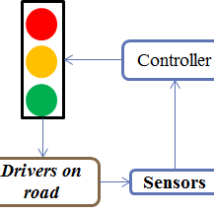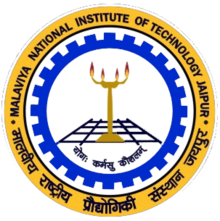Adaptive Traffic Lights – Reducing Road Congestion!
Let’s talk about traffic lights a bit! As a regular commuter, we all face traffic lights daily. Their main purpose is of course to ensure that traffic continues to flow smoothly and without any incidents/accidents on the road, more specifically at the intersection itself. In the earlier days, this was accomplished by a traffic controller standing and directing traffic and in a lot of places, when extremely high traffic is detected that is not being resolved by the traffic lights, this is still done. However, with the growth and development of control and monitoring methods, adaptive traffic lights are being used. They work in a simple manner, even if their implementation is not simple! They monitor the real-time traffic conditions, predict on-coming heavy traffic and adjust their signal time accordingly. Let’s be honest, for all of us drivers on the road, we are most concerned with the time that we have to wait for the light to turn green (specially when we are running late)!!! The green time (time for which the light is green) for a road along with the time that the traffic light is red for that road, constitutes the cycle time.
In traditional traffic lights, in cases of heavy traffic, a traffic officer will sometimes step in and direct traffic. With and without the traffic officer, the drivers end up waiting a long time to clear the intersection, which results in delays for the driver and an increase in the congestion on the road. With adaptive control, the traffic lights are able to self-modify the green time (and therefore, the cycle time) based on real-time traffic conditions and short term traffic prediction. This is accomplished by continuous real-time monitoring using different sensors. These sensors can be camera based and/ or induction loops in the road that determine the number of vehicles at the intersection. traffic lightsThe controller modifies the green time to allow the passing of the increased/ decreased traffic. These techniques are being implemented in various cities across the globe!
Other related adaptive (or smart) technology in traffic control can be seen in pedestrian crossing signals as well as in speed limit enforcement. The latter requires a combination of a camera and speed sensor to detect which vehicle has gone over the speed limit and by how much. The automated controller is able to read the license plate number and sends a respective fine to the user.
For all of this to function as smoothly and quickly as it does, large amounts of real-time data collection alongside analysis and prediction of short term traffic is required. This is where different techniques in Artificial Intelligence (AI) and optimization come in! The faster the computation time and accuracy of these systems, the higher is the performance of the adaptive nature of the traffic lights, which in turn results in lower traffic jams and higher driver satisfaction!

There are a number of factors that influence the working of adaptive traffic lights including proper functioning of sensors and control system, data collection and analysis, and appropriate decision formulation. Uncertainty is introduced in this data when we consider the amount of data from each sensor, its accuracy, the time to analyse and formulate a decision etc… However, when all is said and done, it is important to realize that the biggest uncertainty in the working of adaptive traffic lights and their implementation has nothing to do with the technology and everything to do with human behaviour! If you and me, as drivers on the road, do not follow traffic lights and rules, then even the most adaptive system, will not be able to prevent traffic jams and congestion. Sure, the rule breakers may receive a penalty, but it does not undo the damage or improve the congestion at the time when the lapse occurred. So, human behaviour, which drives the need for technological development, may hinder the same technology in its efficient working!
You can find out more about intelligent traffic lights and their control from the links given below!
- https://www.citylab.com/transportation/2014/09/the-traffic-lights-of-tomorrow-will-actively-manage-congestion/379950/
- https://mashable.com/2011/11/16/traffic-tech/#wcv.Gm5mTqqw
MARCH 6, 2018 VISHUGUPTA0607




